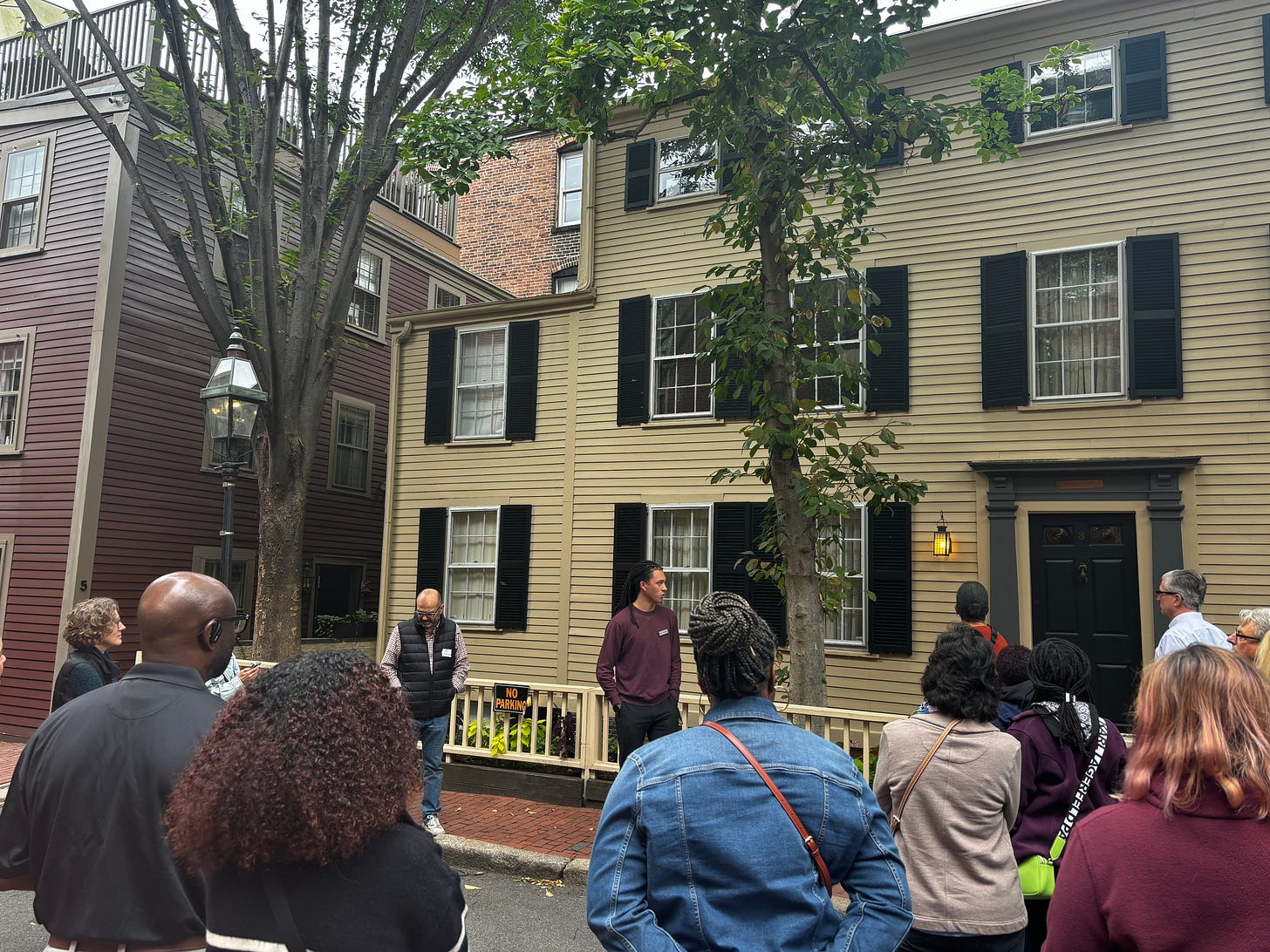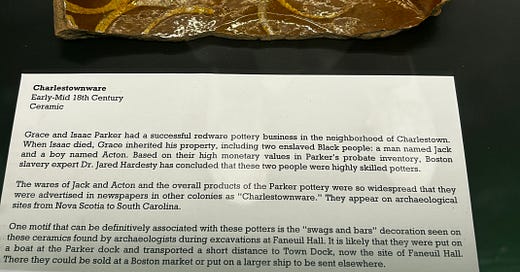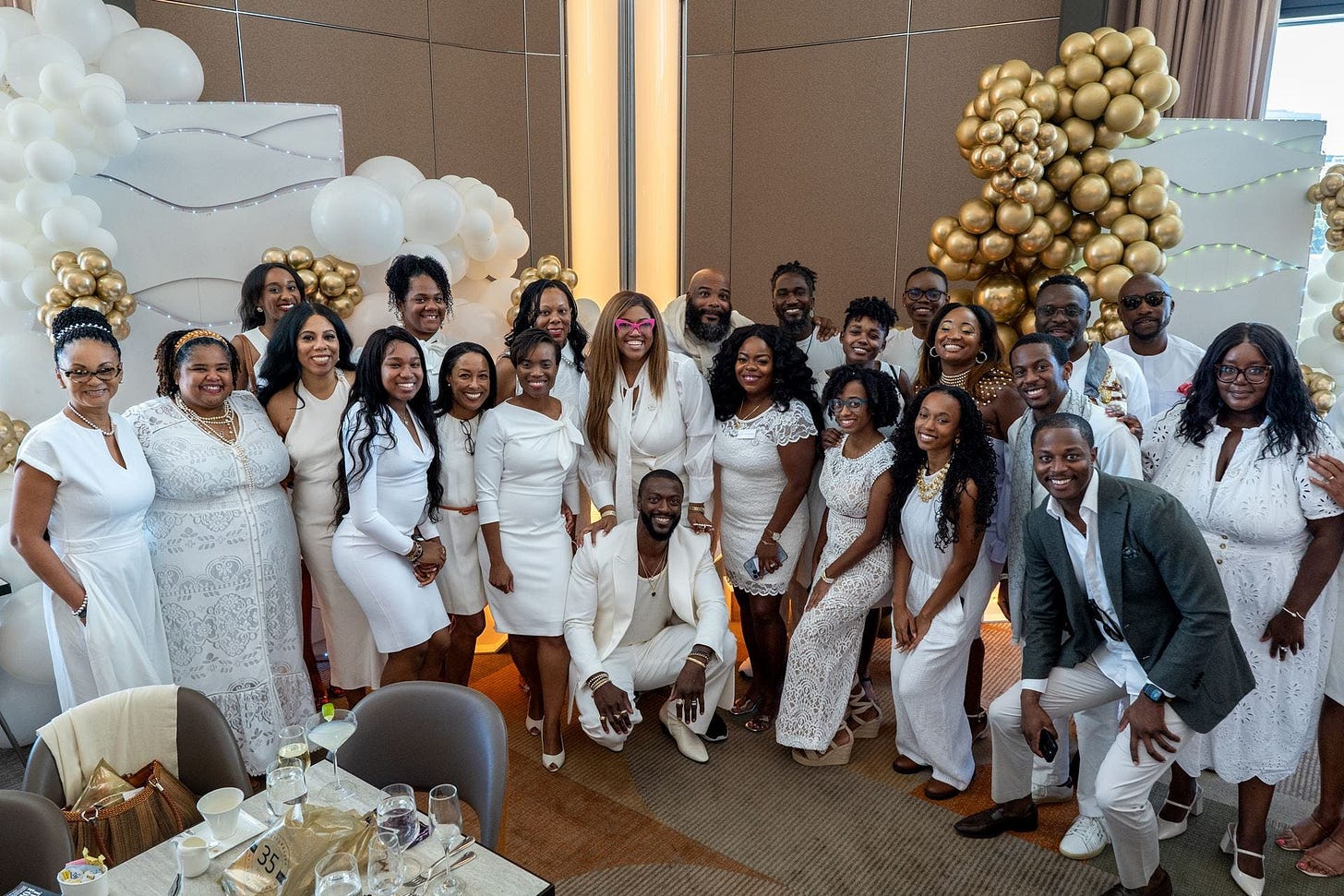Despite my many, many years of writing a history blog, I have learned each day that we are always experiencing history in fragments. Bits and pieces of stories passed down by relatives. Scrapbooks of photographs. Random odds and ends preserved and passed down. Someone once asked me how did archaeologists know what they were looking at when unearthing fragments from the ground. I am not an archaeologist. I spent one summer on a dig before realizing that I dislike heat and bugs and dirt. But I do remember that fragments can tell a huge story, one that connects something as mundane as a piece of broken pottery to the transatlantic slave trade and the housewares filling the homes of the elite and the international commercial trading routes and who lived where before it was bulldozed for urban renewal.
One wouldn’t connect fragments of history with a celebratory affair like the Black Professionals in International Affairs (BPIA) all-white jazz brunch, but the entire weekend revealed that while BPIA was celebrating its 35th anniversary, the presence of African Americans in foreign affairs remains an ephemeral idea to so many. In my remarks to Alexandria J. Maloney, president of BPIA (and one of my best friends), I noted how easily I was rerouted from a career in the field due to not seeing anyone who looked like me doing this work. Multiply this by dozens and dozens of people of color and women, and the viewing the work of not just 35 years, but of over one hundred years as a collection of fragments says there is still work to do.
Back in my undergrad days, I wrote a senior thesis on the role of the World’s Fairs in international affairs. Because of the racism of the period, African Americans were only allowed to participate in the 1893 Chicago fair in the Haitian Pavilion. Frederick Douglass was appointed minister to Haiti in 1889-1891—a political maneuvering by the Harrison administration that speaks to the US government recognizing early on that domestic relations with African Americans were being watched on a global scale.
Douglass was asked to speak at the opening of the Haitian Pavilion two years after resigning from his post, and his speech walked the tightrope that most had to walk: showing pride in being American while also acknowledging the linkages between the African Diaspora at a time when Jim Crow violence permeated the South while the US government also hoped to make allies of the Caribbean and Latin America (which had large Black populations).
About a decade later, poet and composer James Weldon Johnson was appointed US consul in Venezuela (1906-08), Nicaragua (1909-13), and the Azores (1912), on account of his campaigning for Theodore Roosevelt’s presidential campaign, and his fluency in Spanish (he was born and raised in Florida). There are only fragmented mentions of Johnson’s work as a diplomat, since history prefers to remember him as a novelist (The Autobiography of an Ex-Colored Man) and composer (he wrote “Lift Ev’ry Voice and Sing” with his brother Rosamond).
After celebrating BPIA, where a few founding members shared their memories of 35+ years ago, it is obvious that the work of gathering these fragments and piecing them into something substantial remains an important part of celebrating historical moments.
Curator’s Corner

Transitioning from a large national institution to a small local institution has been an interesting shift. The stakes are similar, but operate on a different scale. Where many of my concerns at NMAAHC were how to translate a thematic history to a national—and often international—audience, my concerns now are how to distinguish this particular narrative for a regional audience that has its own ideas about their history. Prior to moving to and working in Boston, my concepts of the city and New England in general were vague snatches of happenings and people that are integrated into the larger American narrative: Salem Witch Trials, Plymouth Rock, the Mayflower, Crispus Attucks, Phillis Wheatley, the Kennedys, Lowell mills. Three months into my tenure as chief curator and director of collections, there is a lot of rich history—and an even deeper interpretation of those familiar events, places, and people.
Some deeper interpretations I am meditating on:
A Sojourn for Harriet Jacobs — an interdisciplinary and public performance project that explores the legacies of abolitionist Harriet Jacobs
The Genius of Phillis Wheatley Peters — I met the PIs of the project earlier this summer, since I was the curator who acquired the largest collection of PWP materials in a public institution. You can read my thoughts in Fine Books & Collections.
"Master Slave Husband Wife: An Epic Journey From Slavery to Freedom" by Ilyon Woo — a Pulitzer Prize winning biography on William and Ellen Craft, who escaped to freedom disguised as white man and his bondsman. The Crafts settled in Beacon Hill after leaving Georgia.
In tandem, one of the more fascinating personal discoveries as a curator and historian is that having lived in various regions of the US, I am curious about what threads we weave from different cities and states and places to create the fabric of “American history.” This is especially interesting as we approach the Semiquincentennial—or 250th—in 2026.
When you reflect on your own hometowns and places you’ve visited, what major narratives and themes have been pulled from that local fabric to become a national thread?
Other things I am thinking about: AI
The Museum of African American History was awarded $75,000 from the Massachusetts 250 Grant Program last month! The proposed exhibition, “Black Voices of the American Revolution,” will explore how to build an immersive digital experience to recreate the lives of Black Bostonians during the 1770-1815 period. There are many questions and thoughts about Artificial Intelligence, and I am doing my due diligence in maintaining an ethical standard for its use.
If you’re in the Boston area, my museum is hosting the annual MAAH Stone Book Award ceremony on Thursday, October 10 at 6:30 PM. This award celebrates the best in historical writing on themes related to African American history.
RSVP here.






This is so packed full of incredible readings and resources. Wow thank you so much!!!